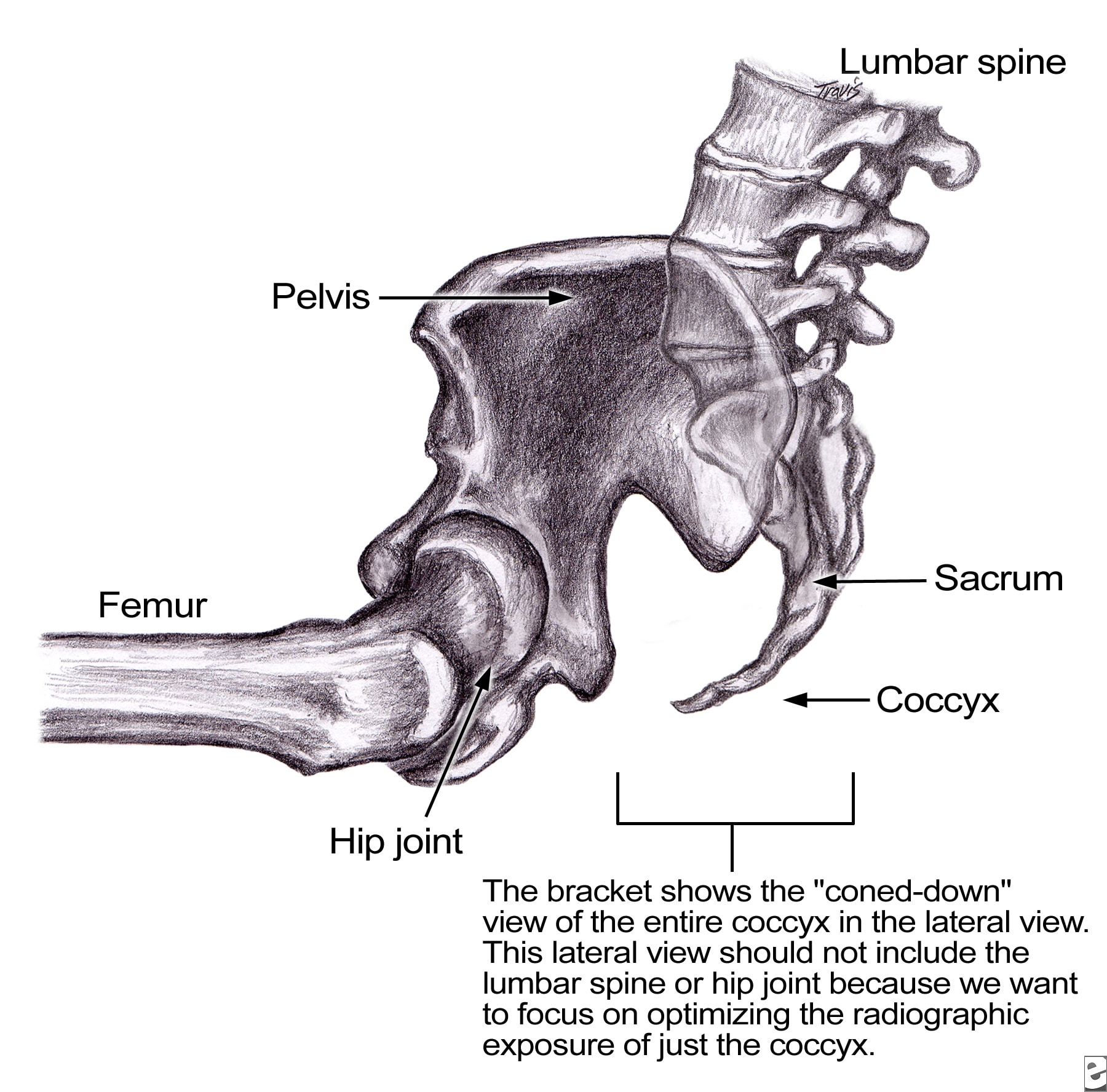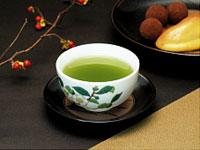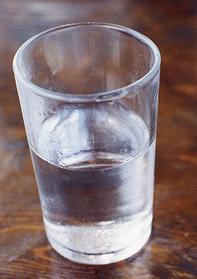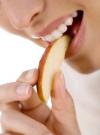What is appendicitis?
Appendicitis is a painful swelling and infection of the appendix.
What is the appendix?
The appendix is a fingerlike pouch attached to the large intestine and located in the lower right area of the abdomen. Scientists are not sure what the appendix does, if anything, but removing it does not appear to affect a person’s health. The inside of the appendix is called the appendiceal lumen. Mucus created by the appendix travels through the appendiceal lumen and empties into the large intestine.
 The appendix is a fingerlike pouch attached to the large intestine in the lower right area of the abdomen.
The appendix is a fingerlike pouch attached to the large intestine in the lower right area of the abdomen.
What causes appendicitis?
Obstruction of the appendiceal lumen causes appendicitis. Mucus backs up in the appendiceal lumen, causing bacteria that normally live inside the appendix to multiply. As a result, the appendix swells and becomes infected. Sources of obstruction include
- feces, parasites, or growths that clog the appendiceal lumen
- enlarged lymph tissue in the wall of the appendix, caused by infection in the gastrointestinal tract or elsewhere in the body
- inflammatory bowel disease, including Crohn’s disease and ulcerative colitis
- trauma to the abdomen
An inflamed appendix will likely burst if not removed. Bursting spreads infection throughout the abdomen—a potentially dangerous condition called peritonitis.
Who gets appendicitis?
Anyone can get appendicitis, but it is more common among people 10 to 30 years old. Appendicitis leads to more emergency abdominal surgeries than any other cause.
What are the symptoms of appendicitis?
Most people with appendicitis have classic symptoms that a doctor can easily identify. The main symptom of appendicitis is abdominal pain.
The abdominal pain usually
- occurs suddenly, often causing a person to wake up at night
- occurs before other symptoms
- begins near the belly button and then moves lower and to the right
- is new and unlike any pain felt before
- gets worse in a matter of hours
- gets worse when moving around, taking deep breaths, coughing, or sneezing
Other symptoms of appendicitis may include

- loss of appetite
- nausea
- vomiting
- constipation or diarrhea
- inability to pass gas
- a low-grade fever that follows other symptoms
- abdominal swelling
- the feeling that passing stool will relieve discomfort
Symptoms vary and can mimic other sources of abdominal pain, including
- intestinal obstruction
- inflammatory bowel disease
- pelvic inflammatory disease and other gynecological disorders
- intestinal adhesions
- constipation
How is appendicitis diagnosed?
A doctor or other health care provider can diagnose most cases of appendicitis by taking a person’s medical history and performing a physical examination. If a person shows classic symptoms, a doctor may suggest surgery right away to remove the appendix before it bursts. Doctors may use laboratory and imaging tests to confirm appendicitis if a person does not have classic symptoms. Tests may also help diagnose appendicitis in people who cannot adequately describe their symptoms, such as children or the mentally impaired.
Medical History
The doctor will ask specific questions about symptoms and health history. Answers to these questions will help rule out other conditions. The doctor will want to know when the pain began and its exact location and severity. Knowing when other symptoms appeared relative to the pain is also helpful. The doctor will ask questions about other medical conditions, previous illnesses and surgeries, and use of medications, alcohol, or illegal drugs.
Physical Examination
Details about the abdominal pain are key to diagnosing appendicitis. The doctor will assess pain by touching or applying pressure to specific areas of the abdomen.
Responses that may indicate appendicitis include
- Guarding. Guarding occurs when a person subconsciously tenses the abdominal muscles during an examination. Voluntary guarding occurs the moment the doctor’s hand touches the abdomen. Involuntary guarding occurs before the doctor actually makes contact.
- Rebound tenderness. A doctor tests for rebound tenderness by applying hand pressure to a patient’s abdomen and then letting go. Pain felt upon the release of the pressure indicates rebound tenderness. A person may also experience rebound tenderness as pain when the abdomen is jarred—for example, when a person bumps into something or goes over a bump in a car.
- Rovsing’s sign. A doctor tests for Rovsing’s sign by applying hand pressure to the lower left side of the abdomen. Pain felt on the lower right side of the abdomen upon the release of pressure on the left side indicates the presence of Rovsing’s sign.
- Psoas sign. The right psoas muscle runs over the pelvis near the appendix. Flexing this muscle will cause abdominal pain if the appendix is inflamed. A doctor can check for the psoas sign by applying resistance to the right knee as the patient tries to lift the right thigh while lying down.
- Obturator sign. The right obturator muscle also runs near the appendix. A doctor tests for the obturator sign by asking the patient to lie down with the right leg bent at the knee. Moving the bent knee left and right requires flexing the obturator muscle and will cause abdominal pain if the appendix is inflamed.
Women of childbearing age may be asked to undergo a pelvic exam to rule out gynecological conditions, which sometimes cause abdominal pain similar to appendicitis.
The doctor may also examine the rectum, which can be tender from appendicitis.
Laboratory Tests
Blood tests are used to check for signs of infection, such as a high white blood cell count. Blood tests may also show dehydration or fluid and electrolyte imbalances. Urinalysis is used to rule out a urinary tract infection. Doctors may also order a pregnancy test for women.
Imaging Tests
Computerized tomography (CT) scans, which create cross-sectional images of the body, can help diagnose appendicitis and other sources of abdominal pain. Ultrasound is sometimes used to look for signs of appendicitis, especially in people who are thin or young. An abdominal x ray is rarely helpful in diagnosing appendicitis but can be used to look for other sources of abdominal pain. Women of childbearing age should have a pregnancy test before undergoing x rays or CT scanning. Both use radiation and can be harmful to a developing fetus. Ultrasound does not use radiation and is not harmful to a fetus.
How is appendicitis treated?
Surgery
Typically, appendicitis is treated by removing the appendix. If appendicitis is suspected, a doctor will often suggest surgery without conducting extensive diagnostic testing. Prompt surgery decreases the likelihood the appendix will burst.
Surgery to remove the appendix is called appendectomy and can be done two ways. The older method, called laparotomy, removes the appendix through a single incision in the lower right area of the abdomen. The newer method, called laparoscopic surgery, uses several smaller incisions and special surgical tools fed through the incisions to remove the appendix. Laparoscopic surgery leads to fewer complications, such as hospital-related infections, and has a shorter recovery time.
Surgery occasionally reveals a normal appendix. In such cases, many surgeons will remove the healthy appendix to eliminate the future possibility of appendicitis. Occasionally, surgery reveals a different problem, which may also be corrected during surgery.
Sometimes an abscess forms around a burst appendix—called an appendiceal abscess. An abscess is a pus-filled mass that results from the body’s attempt to keep an infection from spreading. An abscess may be addressed during surgery or, more commonly, drained before surgery. To drain an abscess, a tube is placed in the abscess through the abdominal wall. CT is used to help find the abscess. The drainage tube is left in place for about 2 weeks while antibiotics are given to treat infection. Six to 8 weeks later, when infection and inflammation are under control, surgery is performed to remove what remains of the burst appendix.
Nonsurgical Treatment
Nonsurgical treatment may be used if surgery is not available, if a person is not well enough to undergo surgery, or if the diagnosis is unclear. Some research suggests that appendicitis can get better without surgery. Nonsurgical treatment includes antibiotics to treat infection and a liquid or soft diet until the infection subsides. A soft diet is low in fiber and easily breaks down in the gastrointestinal tract.
Recovery
With adequate care, most people recover from appendicitis and do not need to make changes to diet, exercise, or lifestyle. Full recovery from surgery takes about 4 to 6 weeks. Limiting physical activity during this time allows tissues to heal.
What should people do if they think they have appendicitis?
Appendicitis is a medical emergency that requires immediate care. People who think they have appendicitis should see a doctor or go to the emergency room right away. Swift diagnosis and treatment reduce the chances the appendix will burst and improve recovery time.
Points to Remember
- Appendicitis is a painful swelling and infection of the appendix.
- The appendix is a fingerlike pouch attached to the large intestine and located in the lower right area of the abdomen.
- Symptoms of appendicitis may include abdominal pain, loss of appetite, nausea, vomiting, constipation or diarrhea, inability to pass gas, low-grade fever, and abdominal swelling.
- A doctor can diagnose most cases of appendicitis by taking a person’s medical history and performing a physical examination. Sometimes laboratory and imaging tests are needed to confirm the diagnosis.
- Appendicitis is typically treated by removing the appendix.
- Appendicitis is a medical emergency that requires immediate care.
 Brussels Sprouts (Brassica oleracea, of the Gemmifera group) originated in Brussels, Belgium in the sixteenth century and like their relative broccoli, were developed from wild cabbage. Brussels sprouts are formed of twenty to eighty baby cabbages growing in spiral formation, close together. This member of the Brassicaceae (Mustard) Family is related to cauliflower and radish. The Latin name Brassica comes from the Celtic bresic and the species name oleracea means "a garden vegetable used in cooking." Gemmifera means, "diamond maker" as this vegetable was once reputed to enhance mental abilities. Brussels sprouts are alkalinizing, antioxidant and liver stimulating. They have a special affinity for the pancreas. They have been used to remedy acidosis, arteriosclerosis, catarrh, constipation, bleeding gums, and high cholesterol. Their high sulfur content makes them warming. They are a good source of beta-carotene, vitamin B6, folic acid, C, flavonoids calcium, iron, and phosphorus. They also contain indoles that are believed to prevent breast cancer by blocking the activity of estrogens that contribute to tumor growth. They are also considered preventative to colon cancer and promoting to good bowel health, due to their high fiber content. They also contain sulforaphanes, which blacks carcinogens from damaging healthy cells.
Brussels Sprouts (Brassica oleracea, of the Gemmifera group) originated in Brussels, Belgium in the sixteenth century and like their relative broccoli, were developed from wild cabbage. Brussels sprouts are formed of twenty to eighty baby cabbages growing in spiral formation, close together. This member of the Brassicaceae (Mustard) Family is related to cauliflower and radish. The Latin name Brassica comes from the Celtic bresic and the species name oleracea means "a garden vegetable used in cooking." Gemmifera means, "diamond maker" as this vegetable was once reputed to enhance mental abilities. Brussels sprouts are alkalinizing, antioxidant and liver stimulating. They have a special affinity for the pancreas. They have been used to remedy acidosis, arteriosclerosis, catarrh, constipation, bleeding gums, and high cholesterol. Their high sulfur content makes them warming. They are a good source of beta-carotene, vitamin B6, folic acid, C, flavonoids calcium, iron, and phosphorus. They also contain indoles that are believed to prevent breast cancer by blocking the activity of estrogens that contribute to tumor growth. They are also considered preventative to colon cancer and promoting to good bowel health, due to their high fiber content. They also contain sulforaphanes, which blacks carcinogens from damaging healthy cells.  Cabbage is esteemed as alterative, anti-inflammatory, antiseptic, circulatory stimulant, muscle builder, and diuretic. It has been used to strengthen eyes, gums, teeth, bones, hair, liver and nails. Cabbage is believed to lower the risk of heart disease, strokes and cataracts. It has been used to treat asthma, high cholesterol, colds, colic, constipation, cough, depression, diabetes, eye infections, fibrocystic breast disease, gout, headaches, hearing loss, insomnia, irritability, kidney and bladder disorders, lumbago, lung congestion, exposure to radiation, skin ailments, tuberculosis, ulcers, yeast infections, and to drive out intestinal worms.
Cabbage is esteemed as alterative, anti-inflammatory, antiseptic, circulatory stimulant, muscle builder, and diuretic. It has been used to strengthen eyes, gums, teeth, bones, hair, liver and nails. Cabbage is believed to lower the risk of heart disease, strokes and cataracts. It has been used to treat asthma, high cholesterol, colds, colic, constipation, cough, depression, diabetes, eye infections, fibrocystic breast disease, gout, headaches, hearing loss, insomnia, irritability, kidney and bladder disorders, lumbago, lung congestion, exposure to radiation, skin ailments, tuberculosis, ulcers, yeast infections, and to drive out intestinal worms. 











 Patients with lasting muscular back pain are quite lucky compared to patients who are diagnosed with some underlying structural source of spinal pain. Chronic muscle aches and pains confound back doctors and are typically grossly mismanaged by the medical professions. Muscle imbalances are sometimes theorized, although this “in vogue” diagnosis often amounts to little more than smoke and mirrors. Fibromyalgia is sometimes pronounced, but the medical treatment of this condition remains among the worst and most ineffectual in the entire healthcare field. Thoracic outlet syndrome is a common diagnosis in the upper back and shoulders, although the exact definition of this condition remains somewhat vague and treatment is poorly conceived, at best. Sometimes, the doctor just does not know what is wrong and this can be a real blessing in disguise…
Patients with lasting muscular back pain are quite lucky compared to patients who are diagnosed with some underlying structural source of spinal pain. Chronic muscle aches and pains confound back doctors and are typically grossly mismanaged by the medical professions. Muscle imbalances are sometimes theorized, although this “in vogue” diagnosis often amounts to little more than smoke and mirrors. Fibromyalgia is sometimes pronounced, but the medical treatment of this condition remains among the worst and most ineffectual in the entire healthcare field. Thoracic outlet syndrome is a common diagnosis in the upper back and shoulders, although the exact definition of this condition remains somewhat vague and treatment is poorly conceived, at best. Sometimes, the doctor just does not know what is wrong and this can be a real blessing in disguise… 






 The research is the largest study to date on breast-feeding and its effect on adult obesity.
The research is the largest study to date on breast-feeding and its effect on adult obesity. 








